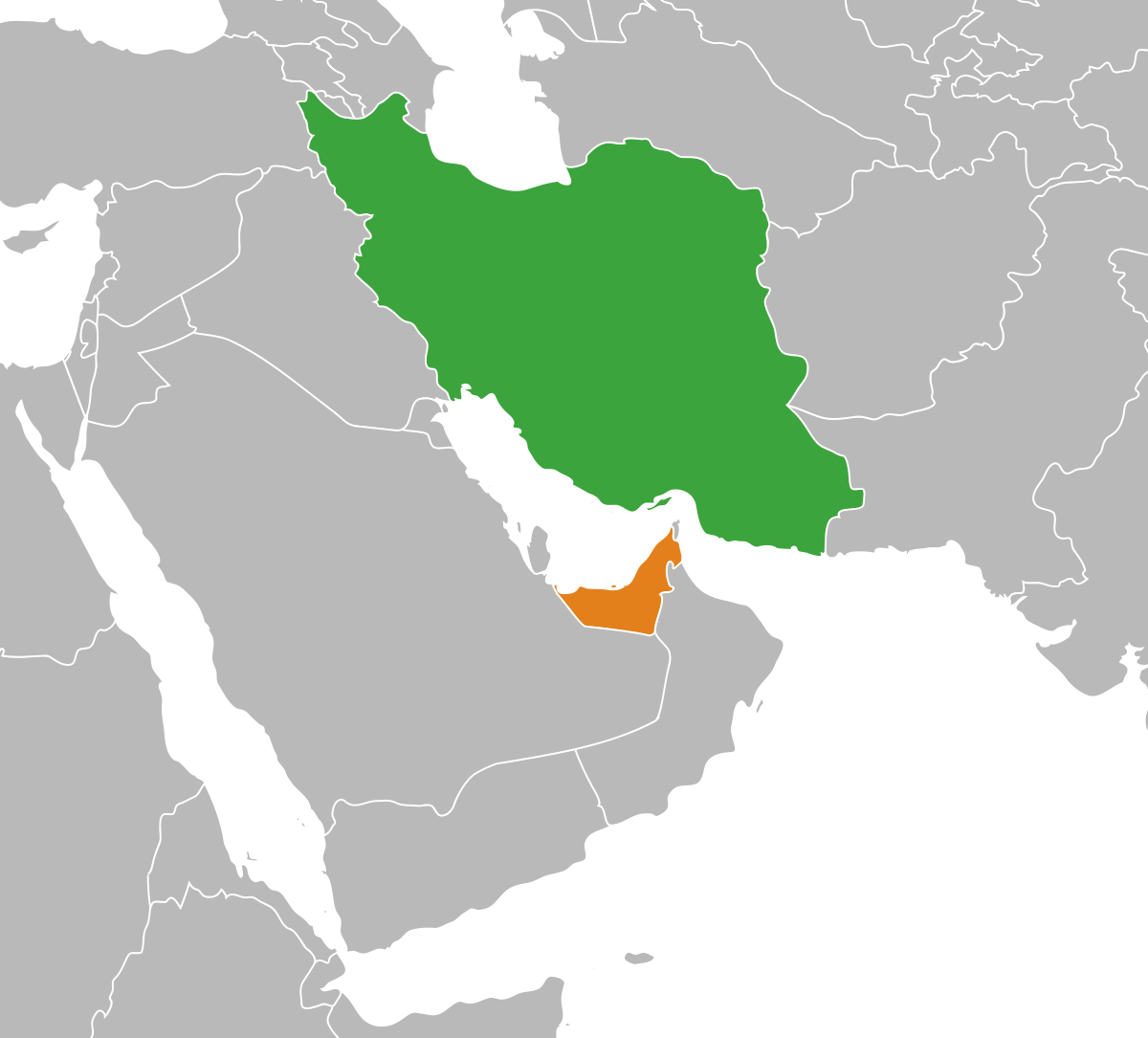Relations between the neighboring countries of Iran and the United Arab Emirates (UAE) are deeply historic, dating back centuries prior to the establishment of the modern-day United Arab Emirates. They maintain diplomatic relations, with embassies in each other countries, and have close economic ties.
There is a significant community of Iranians in the United Arab Emirates, mostly residing in the emirate of Dubai. An Arabic-speaking native community lives in the southern provinces of Iran, some of whose members share historical ties with the southern shores of the Persian Gulf.
Iranian businesses have a major presence in the UAE. Around 8,000 Iranian traders and trading firms are registered in the UAE, according to the local Iranian Business Council. Ethnic Persians are estimated to account for roughly 10 percent of Dubai's population of 2 million. Trade between Dubai and Iran tripled to $12 billion from 2005 to 2009. UAE's exports to Iran are four times greater than its imports from Iran.
In recent decades, there have been tensions over three islands in the Persian Gulf: Abu Musa, Greater Tunb, Lesser Tunb. Both the UAE and Iran have maintained that they are trying to find a solution to this issue according to the rules of international law, as for Iran's nuclear program. Both the UAE and Iran claim to adopt the principle of not interfering in the internal affairs of each other. The UAE has officially stated that it prefers not to interfere with Iran's nuclear program as long as Iran continues to reassure the international community that its nuclear program is for peaceful purposes. Both the UAE and Iran call for the removal from the Middle East of all weapons of mass destruction.
Outstanding conflicts are:
UAE challenges Iran's sovereignty over two islands in the Persian Gulf while Iran considers them as its inseparable parts: Lesser Tunb (called Tunb-al-Sughra in Arabic and Tonb-e-Kuchak in Persian) and Greater Tunb (called Tunb-al-Kubra in Arabic and Tonb-e-Bozorg in Persian). The islands have been in Iran's control since November 1971, following the departure of British forces from the Persian Gulf, and a few days before UAE's declaration of independence in December 1971.UAE has disputed Iran's sovereignty over Abu Musa, an island in the Persian Gulf that was agreed in a 1971 memorandum of understanding to be jointly administered with Iran for civil matters in the southern part of the island (called Jazirat-Abu-Musa in Arabic and Jazireh-ye-Abu-Musa in Persian). The island was under Iranian control until Britain gained control in 1908. In the late 1960s, Britain transferred administration of the island to the British-appointed Sharjah sheikhdom, one of the seven sheikdoms that would later form the UAE. On November 30, 1971 (two days before the official establishment of UAE), Iran and Sharjah signed a memorandum of understanding to jointly administer a part of the island based on a map annexed to the memorandum, allowing Iran to station military forces and the Sharjah sheikhdom to maintain a limited number of police in the island. However, Iran has taken steps to exert unilateral control since 1992, including access restrictions and a military build-up on the island, as well as expelling the foreign workers who operated the UAE-sponsored school, medical clinic, and power-generating station.Iran has criticized the UAE for allowing France to develop its first permanent base in the Persian Gulf and generally considers the UAE's permission for stationing the western powers' military forces in the region as a threat to its national security.UAE Football League's name change has been viewed as a revival of the Persian Gulf naming dispute.On November 28, 2013, the foreign minister of the UAE visited Iran.

